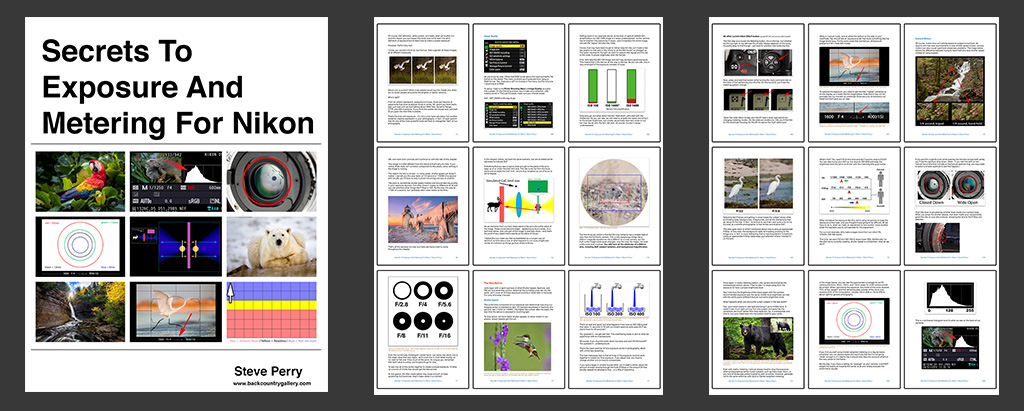With regard to landscape......those photos where it is an entire mountain valley spanning what might be 1 mile (or more) or so in width that was taken by a photographer more than several miles away.
What F is that at? I know, an open ended question, but if you do not want it at the lower F #s for something like that, where do people usually put it at?
It depends on several things and like everything, the deeper you dive into this the more considerations you encounter.
That said, many landscapes are shot with a moderate focal length to wide angle lens. If the scenic shot has say distant mountains, a mid ground area some distance away and the closest foreground isn't super close and you're shooting at something like 24mm - 50mm or so you might get away with f/8 to f/11 or so to keep everything in focus. But if the scene has a dominant super close foreground element like a flower or rock or something just in front of the lens and still has a mid ground and distant background you may very well have to stop down further to keep things sharp. But if that scene with super close and super far elements is shot with say a 12mm lens you might do just fine at f/8 to f/11 as focal length and closest subject distance has a big impact on DoF.
Some time with an online DoF calculator can give you ideas of how things work for the range of focal lengths you work with. For instance shooting a 24mm lens on a full frame camera like your Z8, if you focus at 1 meter the scene from 0.71m to 1.69m will all be in acceptably good focus or within the depth of field limits. But if you focus at 2.5m then everything from 1.2 meters to infinity will be in acceptably good focus. That relatively small change in focusing distance pushed the lens and aperture combo out beyond what's known as the hyperfocal distance where everything to infinity will be reasonably sharp. It's one big trick in landscape work to know your hyperfocal distances (or carry a phone app to tell you) and not worry too much about keeping the background in good focus.
But try that same thing with a 50mm lens and at f/8 the hyperfocal distance is nearly 10.5 meters away so if you did have a super close foreground object you want to keep in focus you'd have to stop down beyond f/8. Here's an example of a decent DoF calculator:
https://www.photopills.com/calculators/dof
But as you dive deeper into the rabbit hole you also learn that lenses can start to degrade a bit as you stop down too far due to diffraction effects. IOW, stopping down to f/8 or even f/11 on most moderate to wide angle lenses may be fine but as you keep stopping down the lens can lose sharpness. Sometimes that small degradation is acceptable to get the shot you're after and sometimes it's too big a tradeoff and then we might do things like shoot multiple images, each focused a bit differently and then combine the sharpest parts of each into a final image in a process known as focus stacking. Focus stacking can be very helpful for super tight macro work, some landscapes and even some wildlife work if your subjects stay still long enough for multiple shots.
So lot's of things can influence how far to stop down for a given shot but carrying around something like a 24mm to 120mm zoom lens I'd generally speaking have no trouble stopping down to f/8 or f/11 or even f/16 in a pinch but I know I'd be giving away a bit of critical sharpness at that point and wouldn't generally go much farther unless I really needed all the DoF I could muster and wasn't willing or able to take the time to shoot a focus stacking sequence.
-Tennis (like when you see the ball frozen and the ball they hit 12 inches from their racket)?
-Shooting a bow and you want to catch the arrow in flight?
You can do the math if you know the speed of the tennis ball or the arrow and know things like how far away they are and what focal length you're shooting with. But generally speaking it's not crazy hard to capture the tennis ball in flight with fast shutter speeds and decent light. I've shot a lot of hockey but not a lot of tennis but I'd guess you'd have a pretty good chance of freezing the flight of the ball at 1/3200" to 1/4000" or so depending on distance, speed of the ball, etc.
I'd suspect you'd need either an awful lot of light and a super fast shutter speed or more likely a darkened room and a synchronized flash unit to capture an arrow in flight. The latter is how bullets in flight are typically captured and it basically relies on a dark room and the flash effectively determining the shutter speed. IOW, if the room is totally dark and the camera shutter is left open there will be no exposure until and only as long as the flash fires. A high power, well controlled flash may have a burst only 1/200,000" or even shorter and that effectively acts as the shutter speed.
On a more achievable level that's how a lot of hummingbird photography was done back in the film and early digital days where ISO had to capped at very low values compared to modern cameras. If you're stuck shooting Velvia (a very popular Fuji film) at ISO 50 you can't expect to freeze a hummers wings with fast shutter speeds and daylight but one or more flash units placed close to flowers or a feeder could get the job done by relying on the flash as the effective shutter and setting things up to underexpose the ambient light.


